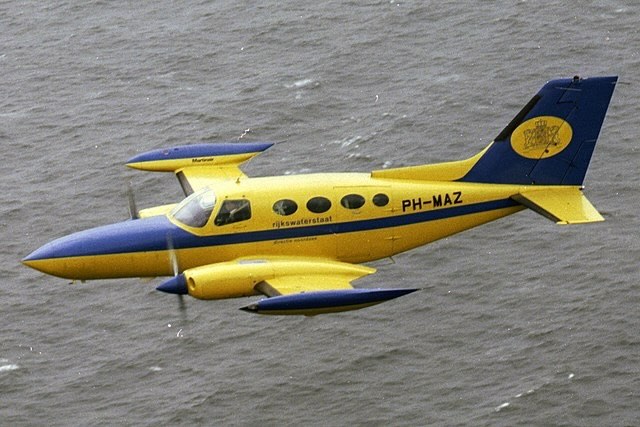Cessna 402
Summary
| Category | Military Transport Aircraft |
| Origin country | 🇺🇸 United States |
| Manufacturer | Cessna |
| First flight | 26 August 1965 |
| Year introduced | 1967 |
| Number produced | 2 units |
| Average unit price | $0.4 million |
Description
The Cessna 401 and 402 series were developed as unpressurized, twin-engine piston aircraft intended as reliable workhorses for cargo and small commuter airlines. These models were developed from the Cessna 411, with primary design goals to improve upon its single-engine handling and avoid using its expensive and maintenance-prone geared engines. The original Cessna 402 was introduced in 1967, alongside a version without the large cargo door called the Cessna 401. The FAA granted certification to the Cessna 401 in October 1968 and the 402 in January 1969. In 1969, the 402's nose was stretched for added baggage space, and the model was renamed the 402A while the 401 retained the original nose. 1970 saw minor changes and the introduction of optional larger fuel tanks, creating the 402B. Numerous changes were made to the airframe between 1971 and 1977. By 1971, sales of the 401 had slowed, leading to its discontinuation. In 1979, the 402s received a new wing with a greater span, a simpler landing gear system derived from the Cessna 414, and increased engine output, resulting in the Cessna 402C. Production of the series ceased after the 1985 model year.
Early models of the Cessna 401 and 402 were powered by 300 hp (224 kW) turbocharged Continental engines, coupled with three-bladed, constant-speed, fully feathering propellers. To mitigate cabin noise, cruise power was later limited to 75% on some models, and a propeller synchrophaser was introduced to further reduce noise and vibration. Later, in 1979, the 402s received a new wing with a greater span, along with a simplified landing gear system derived from the Cessna 414. Engine output was increased to 325 hp (242 kW) each, and the maximum gross weight was raised.
The Cessna 401 and 402 series are light utility aircraft with all seats being easily removable so that the aircraft can be used in an all-cargo configuration. Payload capacity varies depending on the specific model and any modifications performed. For example, the 402C Businessliner has a maximum takeoff weight of 6,850 lb (3,107 kg) and an empty weight of 4,077 lb (1,849 kg), yielding a potential payload of approximately 2,773 lb (1,258 kg). The aircraft were not designed for military applications and therefore lack any specified armament.
The Cessna 402 has found significant use in the civilian sector, particularly with small regional airlines that operate on short, low-density routes connecting to larger hubs. Its reliability, range, and passenger capacity have made it a popular choice for such operations worldwide. As of March 2024, Cape Air stands out as the largest operator of the Cessna 402, maintaining a fleet of 64 aircraft used in the Caribbean, Micronesia, and the United States.
Main Variants:
-
401: This six- to eight-seat variant was intended for corporate transport and produced from 1966 to 1972.
-
402: This version could be configured for either utility purposes such as freight transport, or for nine-seat commuter operations.
-
402A: Featuring a lengthened nose to accommodate a baggage compartment, this variant also offered an optional crew entry door.
-
402B Utiliner/Businessliner: This was a 402A with minor changes that, from 1972 onwards, boasted an increased cabin volume and five windows on each side; the Utiliner version featured a ten-seat interior for commuter airline operations, while the Businessliner had a six- to eight-seat interior for corporate transport.
-
402C Utiliner/Businessliner: Equipped with Continental TSIO-520-VB 325 hp engines, this model featured an increased takeoff weight, longer wingspan without main tip tanks, and a hydraulic rather than electric landing gear system.
Technical specifications
| Version: 402C | |
|---|---|
| Maximum speed | 426 km/h (265 mph) |
| Wing area | 21 m² (226.0 sqft) |
| Wingspan | 13.5 m (44.2 ft) |
| Height | 3.5 m (11.6 ft) |
| Length | 11.1 m (36.5 ft) |
| Service ceiling | 8,199 m (26,900 ft) |
| Empty weight | 1,846 kg (4,070 lbs) |
| Max. takeoff weight | 3,107 kg (6,850 lbs) |
| Climb rate | 7.36 m/s (24.1 ft/s) |
| Powerplant | 2 x pistons engine Continental TSIO-520-VB delivering 242 kW each |
All operators


